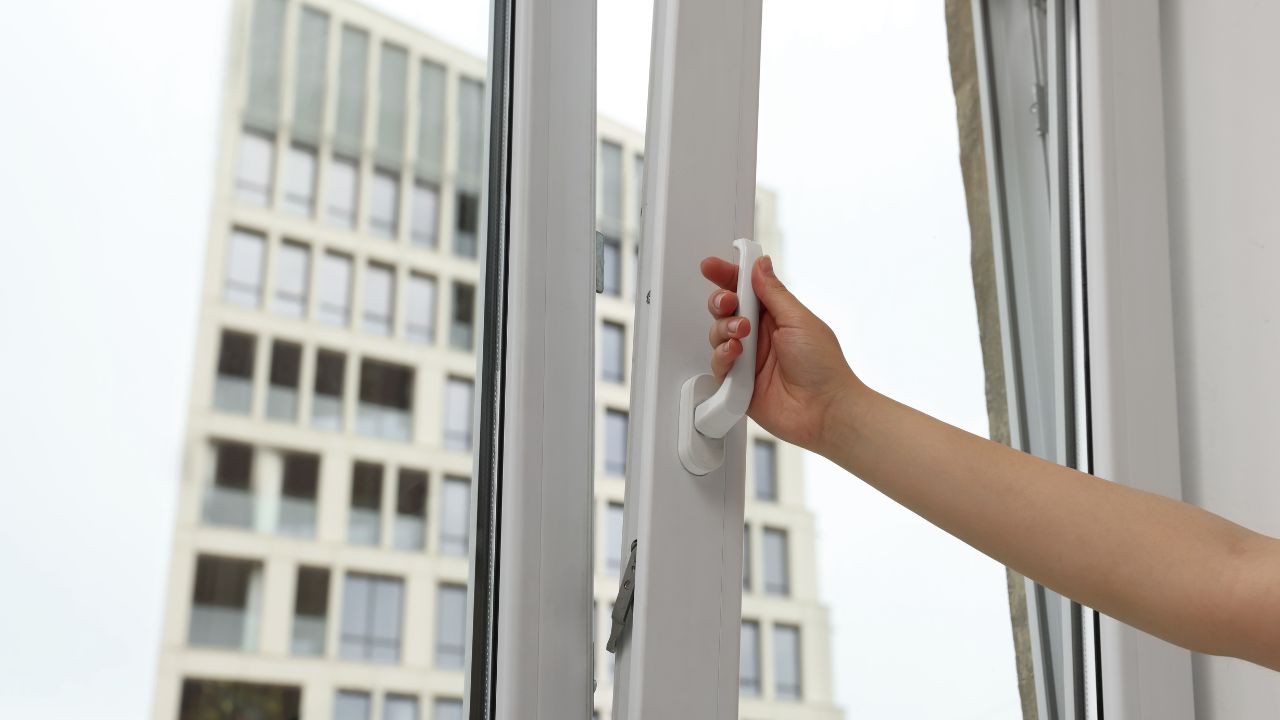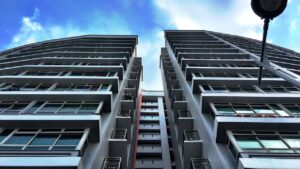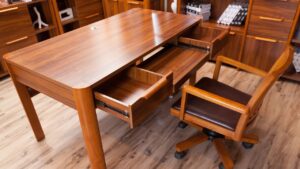Standard single-glazed windows, common in many HDB flats, offer little defence against noise pollution. These include the traffic from major expressways, the rattle of nearby MRT tracks, and the noise from construction and renovation projects.
With so much noise pollution in urban Singapore, soundproof windows can be a vital investment in personal well-being and mental health.
1) Understanding The Glass For Soundproof Windows
The glass is the most critical component when it comes to soundproof windows. The options range from basic to highly advanced.
Standard Double Glazing
This consists of two panes of glass separated by a sealed air or inert gas (like argon) gap. While often marketed as “soundproof,” its primary strength is thermal insulation, which helps reduce air-conditioning costs. It provides moderate noise reduction, typically around 25-35 decibels (dB), but is less effective against the low-frequency rumbles of traffic and trains. Triple-glazing adds a third pane and a second air gap for maximum performance.
Laminated Glass
This is the key to achieving effective damping. It is constructed like a sandwich, with a tough plastic interlayer, typically Polyvinyl Butyral (PVB), bonded between two panes of glass. This PVB layer acts like a shock absorber or a cushion of gel; when sound waves hit the glass and cause it to vibrate, the interlayer absorbs and dissipates that vibrational energy, converting it into imperceptible heat.
This makes laminated glass exceptionally effective at reducing low-frequency noise.
Acoustic Glass
This is the premium tier of soundproofing. It is a specialized form of laminated glass where the PVB interlayer has been specifically engineered with enhanced acoustic damping properties. The highest-performance soundproofing systems often use this acoustic laminated glass within a double-glazed unit.
This powerful combination leverages bothdamping (from the acoustic lamination) and decoupling (from the air gap) for maximum noise reduction across a wide range of frequencies.
To maximize performance, two additional principles are often employed:
Asymmetrical Glass Thickness
Using panes of different thicknesses (e.g., a 6mm pane and a 4mm pane) in a double-glazed unit is a clever technique. Each thickness of glass has a natural resonant frequency at which it vibrates most easily. By using different thicknesses, the two panes disrupt a wider spectrum of sound frequencies and prevent the entire unit from resonating in sympathy with a specific external noise.
The Air Gap Matters
In a double-glazed system, a wider air gap provides better sound insulation (decoupling). For a significant effect against low-frequency noise, an air gap of 6 cm or more may be required, which is much larger than in standard thermal double glazing.
2) Understanding The Window Frame For Soundproof Windows
Window Frame Materials
The frame material plays a surprisingly large role in the overall performance of the system.
- uPVC (Unplasticized Polyvinyl Chloride): uPVC is a natural insulator of both sound and heat. Its profile contains multiple internal chambers that trap air, disrupting the transmission of sound and heat energy. This makes it an excellent choice for energy efficiency in Singapore’s hot climate. However, some find its appearance less premium (“plastic-like”), and its lifespan is generally cited as 20-30 years, shorter than aluminium’s.
- Aluminium: Durable, strong, and with a lifespan exceeding 40 years, aluminium is the “overwhelming favourite” in Singapore’s construction industry. It allows for much slimmer, sleeker frames that are preferred in modern architecture. The critical drawback of standard aluminium is that it is an excellent conductor of heat and sound; noise and heat can travel easily through a hollow aluminium frame, bypassing even the best glass.
- Thermally Broken Aluminium: This advanced design solves aluminium’s primary weakness. It incorporates a reinforced polyamide or polyurethane strip that physically separates the interior and exterior aluminium profiles. This “thermal break” acts as an insulator, drastically reducing the transmission of heat and sound.
Thermally Broken Aluminium offers the durability and aesthetics of aluminium with insulation performance that approaches that of uPVC, representing the ideal solution for Singapore’s unique blend of climate challenges and aesthetic preferences.
Window Types
Casement vs. Sliding Windows: For acoustics, casement (swing-out) windows are superior. Their multi-point locking mechanisms create high compression, pressing the window sash tightly and uniformly against the frame’s gaskets. This creates a near-perfect airtight seal.
Sliding windows, by design, are harder to seal. They rely on brush or fin seals that can leave small gaps, which become significant pathways for noise leakage.
Sealing
The most advanced glass is rendered ineffective if sound can leak through gaps in the frame. A superior soundproof window uses high-quality compression gaskets and multi-point locking mechanisms that create an airtight seal when the window is closed, preventing sound leakage
3) Conclusion
Quality soundproofing is a significant home improvement investment, not a minor expense. It is essential to approach it with a realistic budget and to evaluate costs based on performance and value, not just the initial price tag.
A cheap window that fails to solve the noise problem is a complete waste of money while a more expensive system that delivers genuine peace and quiet provides a true return on investment in quality of life.




